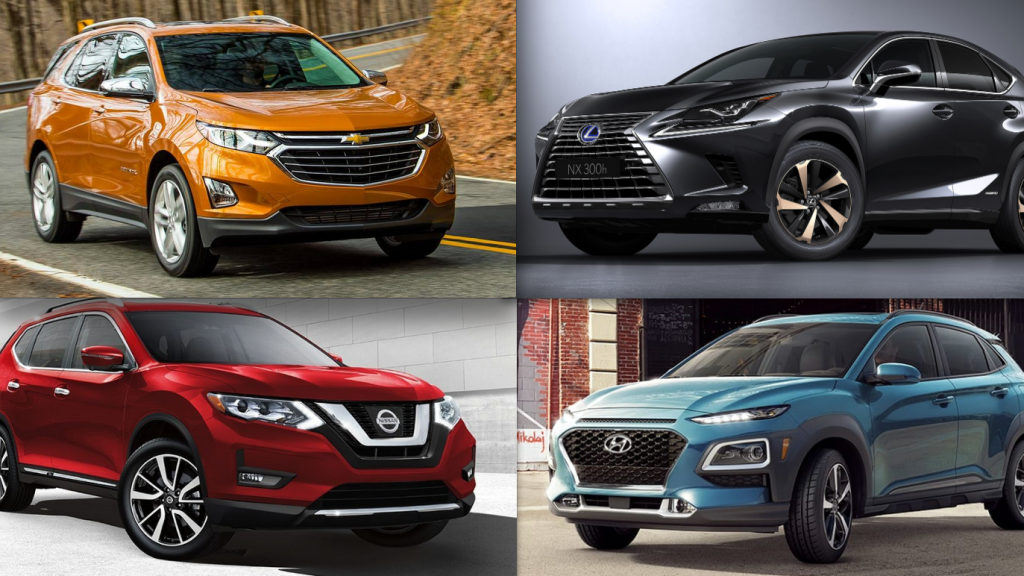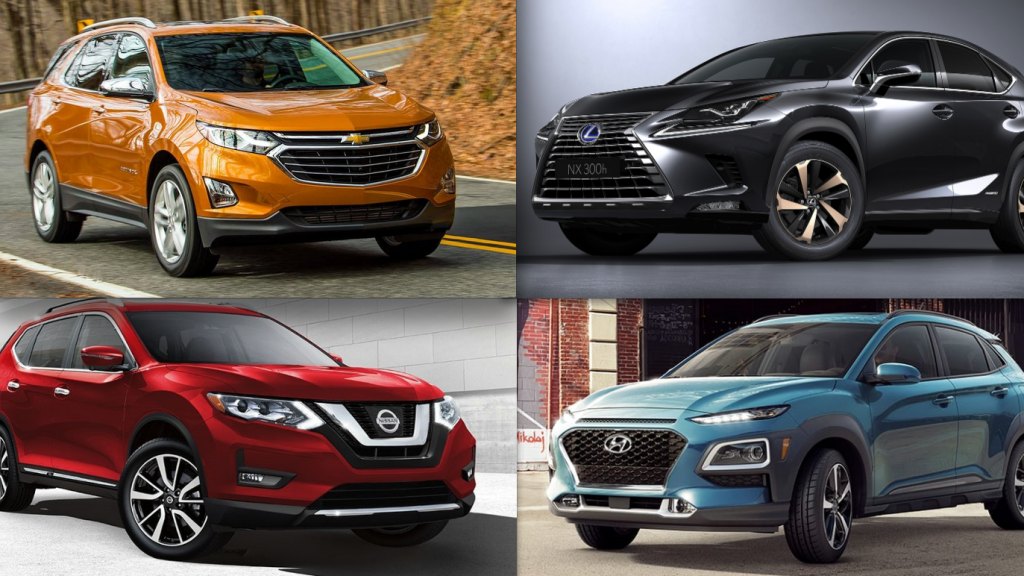
It wasn’t that long ago that the typical family-oriented passenger car was notably more fuel-efficient than the average SUV. Today, the efficiency gap between the two vehicle types is much smaller than it used to be. Crossover SUVs–those based on passenger-car chassis instead of truck-like body-on-frame architectures–have proliferated, and many new SUV models have gotten smaller and lighter while still retaining an extra degree of cargo room and functionality over their comparable passenger-car counterparts.
Vast numbers of car-buying public seem to approve: crossover SUVs now comfortably outsell traditional compact- and midsize sedans.
Worth noting is that the average vehicle sold in the U.S. in 2016 averaged just under 25 mpg. Remember that number.
Collected here are the ten most fuel-efficient crossovers now available for sale in the U.S., as ranked by the Environmental Protection Agency (EPA). This list includes a number of fuel-saving technologies, such as diesel and hybrid powertrains.
Oh, and the 25 mpg average? Every vehicle on this list boasts an EPA combined (city/highway) average rating of 30 mpg or greater.
If you’d like to share the fuel economy you’re seeing with your own crossover, please drop us a line down below.
I Broke the 50-MPG Barrier Driving Through Wisconsin. It Was Hell.
Nissan Rogue Hybrid: 34 mpg combined
Drive: Front-wheel drive
City/Highway mpg: 33/35
Consumer Guide Observed Fuel Economy (mpg): 29.4
Drivetrain: 2.0-liter 4-cylinder with hybrid assist/CVT automatic transmission
The AWD Rogue Hybrid is rated at 33 mpg combined.
Nissan Kicks: 33 mpg combined
Drive: Front-wheel drive
City/Highway mpg: 31/36
Consumer Guide Observed Fuel Economy (mpg): N/A
Drivetrain: 1.6-liter 4-cylinder/CVT automatic transmission
The Kicks is currently offered only with front-wheel drive.
Toyota RAV4 Hybrid: 32 mpg combined
Drive: AWD
City/Highway mpg: 34/30
Consumer Guide Observed Fuel Economy (mpg): 31.0
Drivetrain: 2.5-liter 4-cylinder/CVT automatic transmission
The RAV4 Hybrid is offered only with AWD.
Chevrolet Equinox Diesel: 32 mpg combined
Drive: Front-wheel drive
City/Highway mpg: 28/39
Consumer Guide Observed Fuel Economy (mpg): N/A
Drivetrain: 1.6-liter turbodiesel/6-speed automatic
The AWD Equinox Diesel is EPA-rated at the same 32 mpg combined, but the highway rating drops to 38.
GMC Terrain Diesel: 32 mpg combined
Drive: Front-wheel drive
City/Highway mpg: 28/39
Consumer Guide Observed Fuel Economy (mpg): N/A
Drivetrain: 1.6-liter turbodiesel/6-speed automatic
The AWD Terrain Diesel is EPA-rated at the same 32 mpg combined, but the highway rating drops to 38.
Lexus NX 300h: 31 mpg combined
Drive: AWD
City/Highway mpg: 33/30
Consumer Guide Observed Fuel Economy (mpg): 33.7
Drivetrain: 2.5-liter 4-cylinder/CVT automatic transmission
The NX 300h is offered only with AWD.
Honda HR-V: 31 mpg combined
Drive: Front-wheel drive
City/Highway mpg: 28/34
Consumer Guide Observed Fuel Economy (mpg) 27.0
Drivetrain: 1.8-liter 4-cylinder/CVT automatic transmission
The AWD HR-V is EPA-rated at a combined 29 mpg.
Lexus RX 450h: 30 mpg combined
Drive: AWD
City/Highway mpg: 31/28
Consumer Guide Observed Fuel Economy (mpg): 31.0
Drivetrain: 3.5-liter V6 with hybrid assist/CVT automatic transmission
The Lexus 450h is available only with AWD.
Honda CR-V: 30 mpg combined
Drive: Front-wheel drive
City/Highway mpg: 28/34
Consumer Guide Observed Fuel Economy (mpg): 26.2 (AWD)
Drivetrain:1.5-liter turbocharged 4-cylinder/CVT automatic transmission
The CR-V with the 1.5-liter engine and AWD is EPA rated at a combined 29 mpg.
Hyundai Kona: 30 mpg combined
Drive: Front-wheel drive
City/Highway mpg: 28/32
Consumer Guide Observed Fuel Economy (mpg): 27.3*
Drivetrain:1.6-liter turbocharged 4-cylinder/7-speed automatic transmission
AWD Konas powered by this engine are EPA rated at a combined 27 mpg. *Consumer Guide’s evaluation is of a front-wheel-drive Kona powered by the base 2.0-liter engine.
